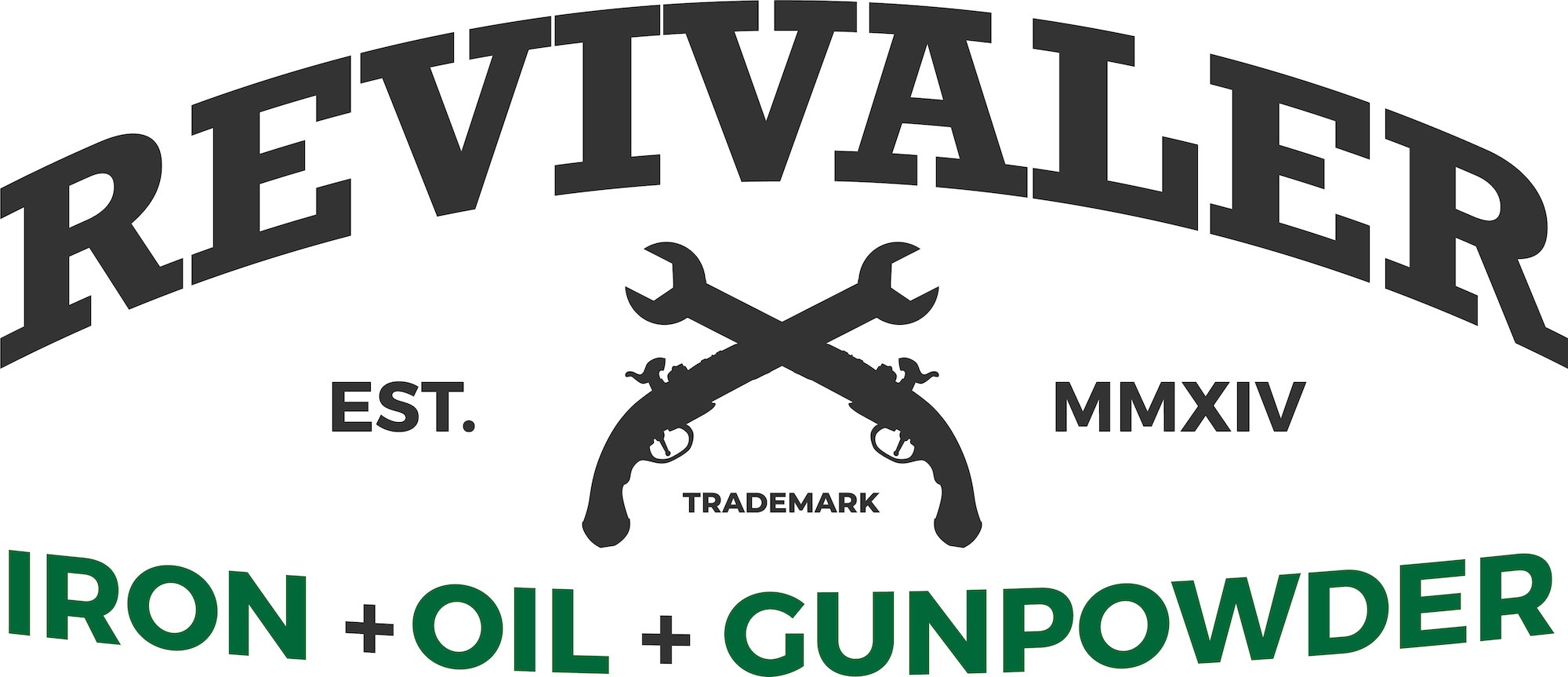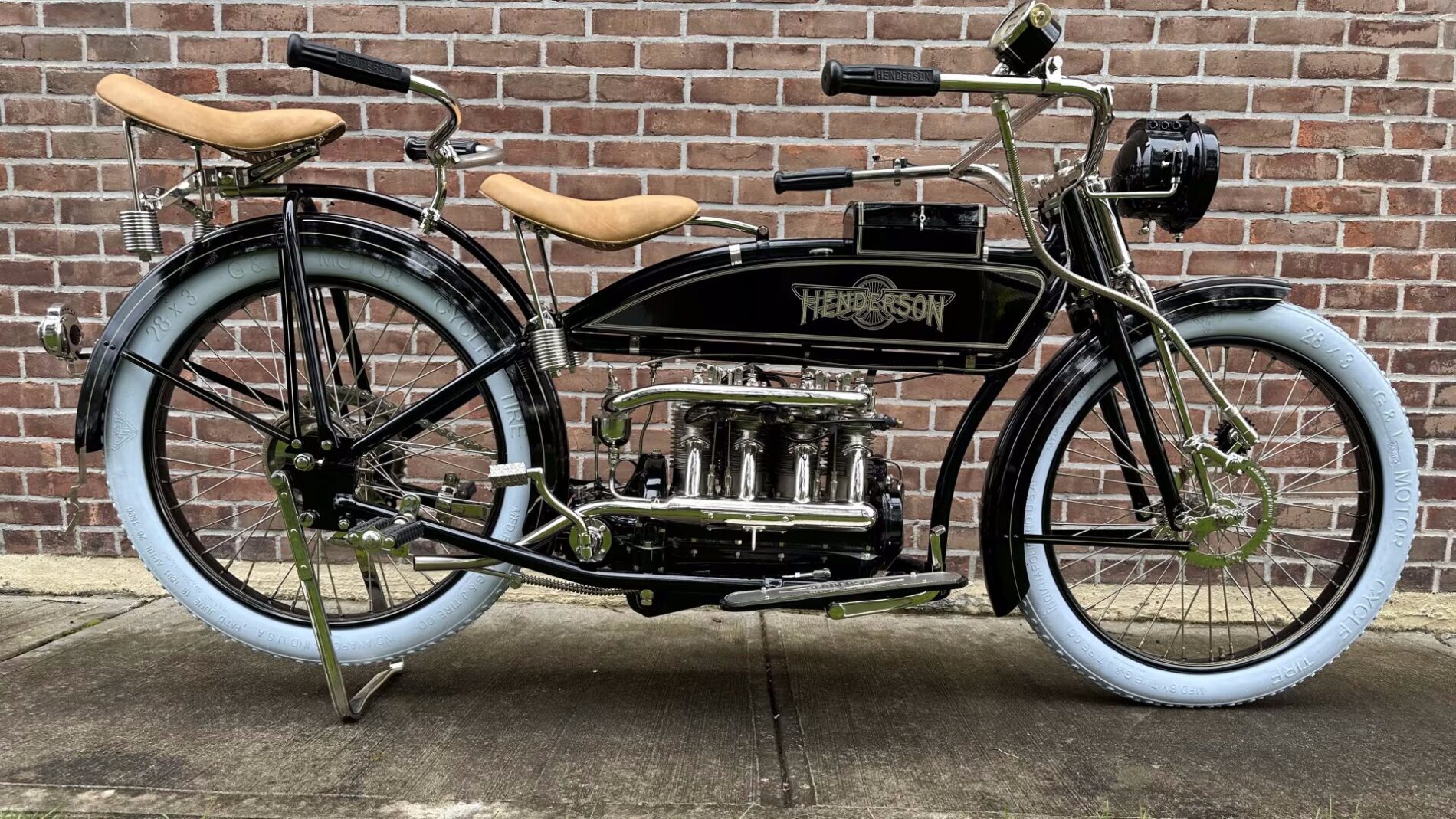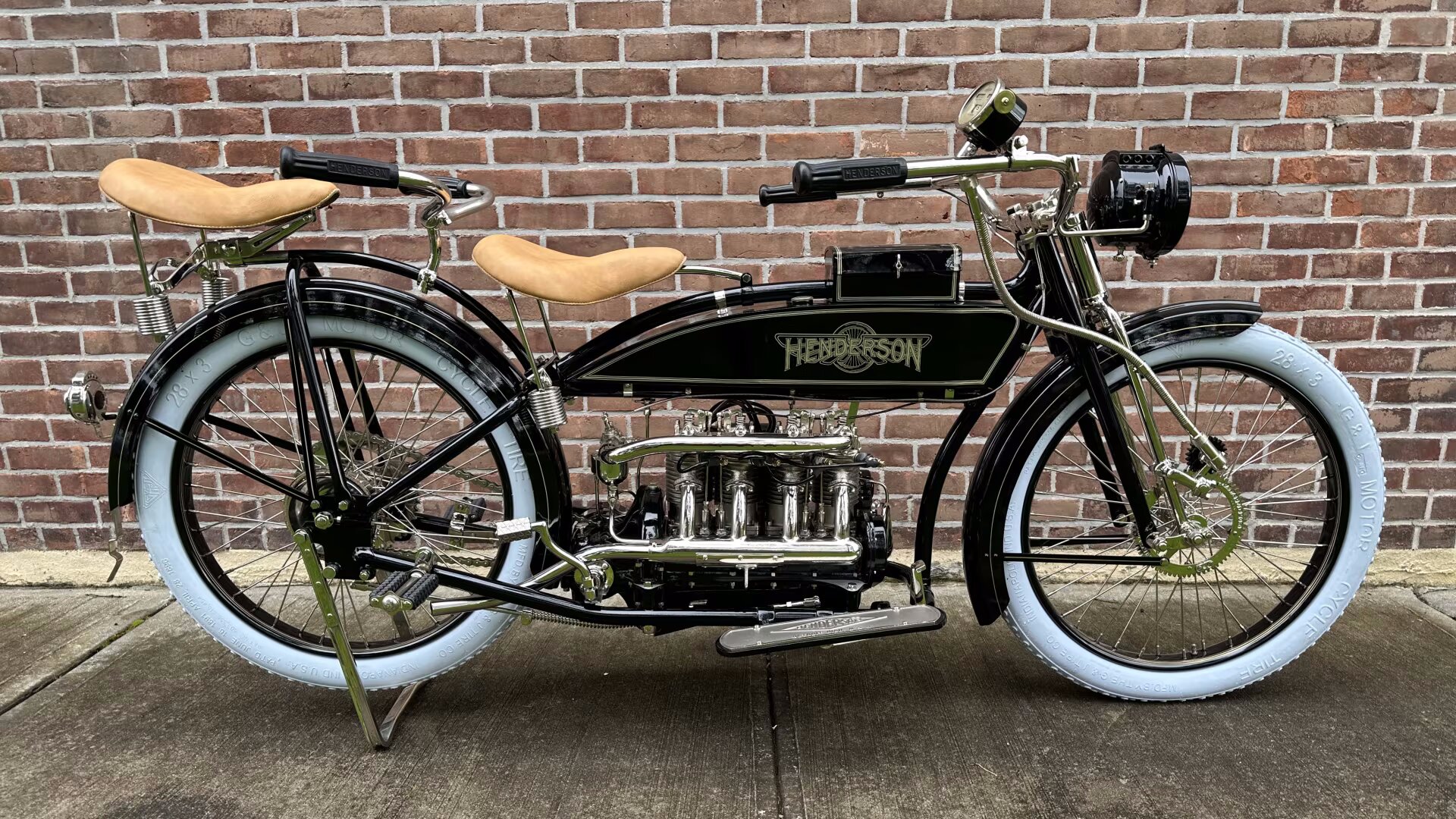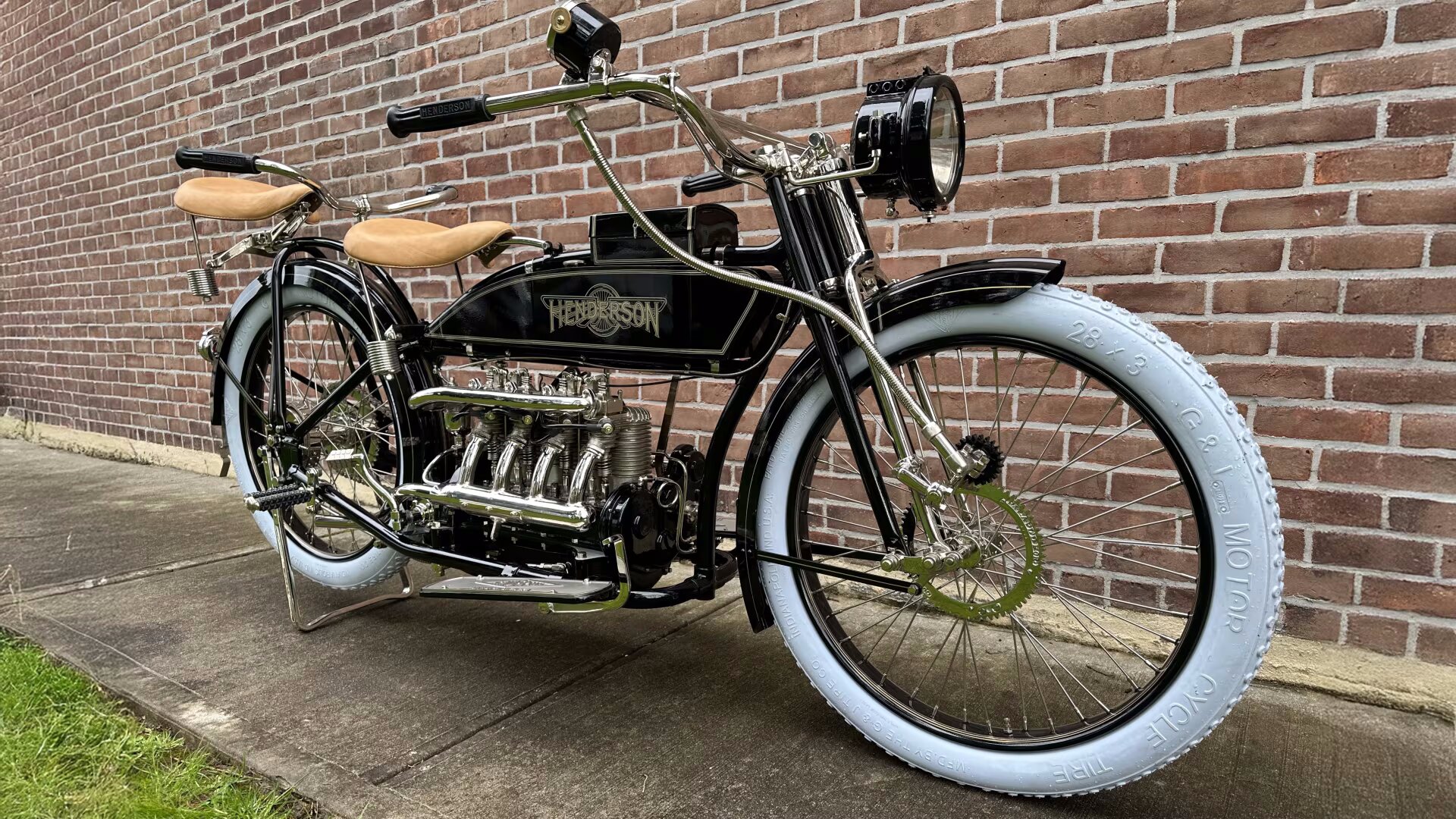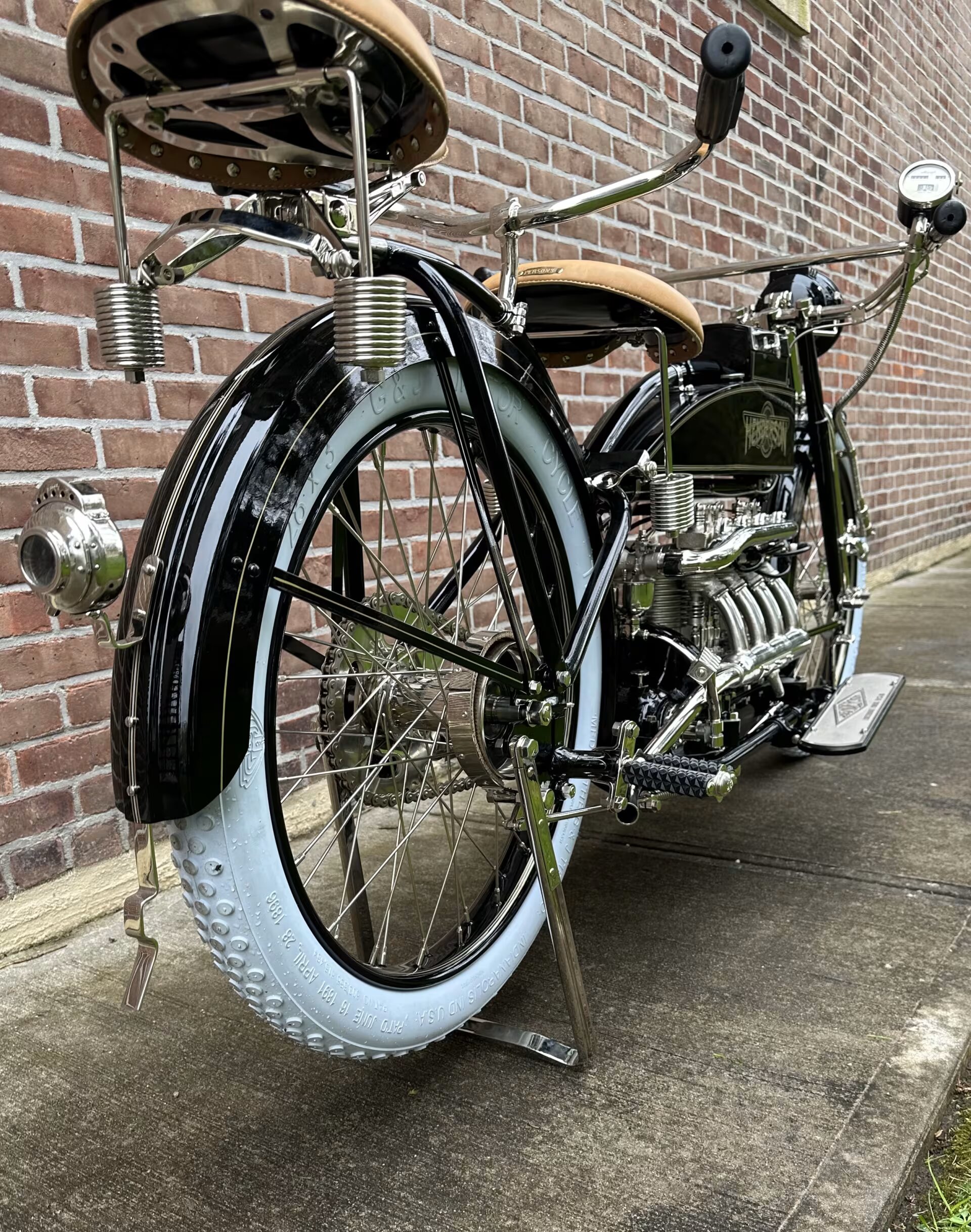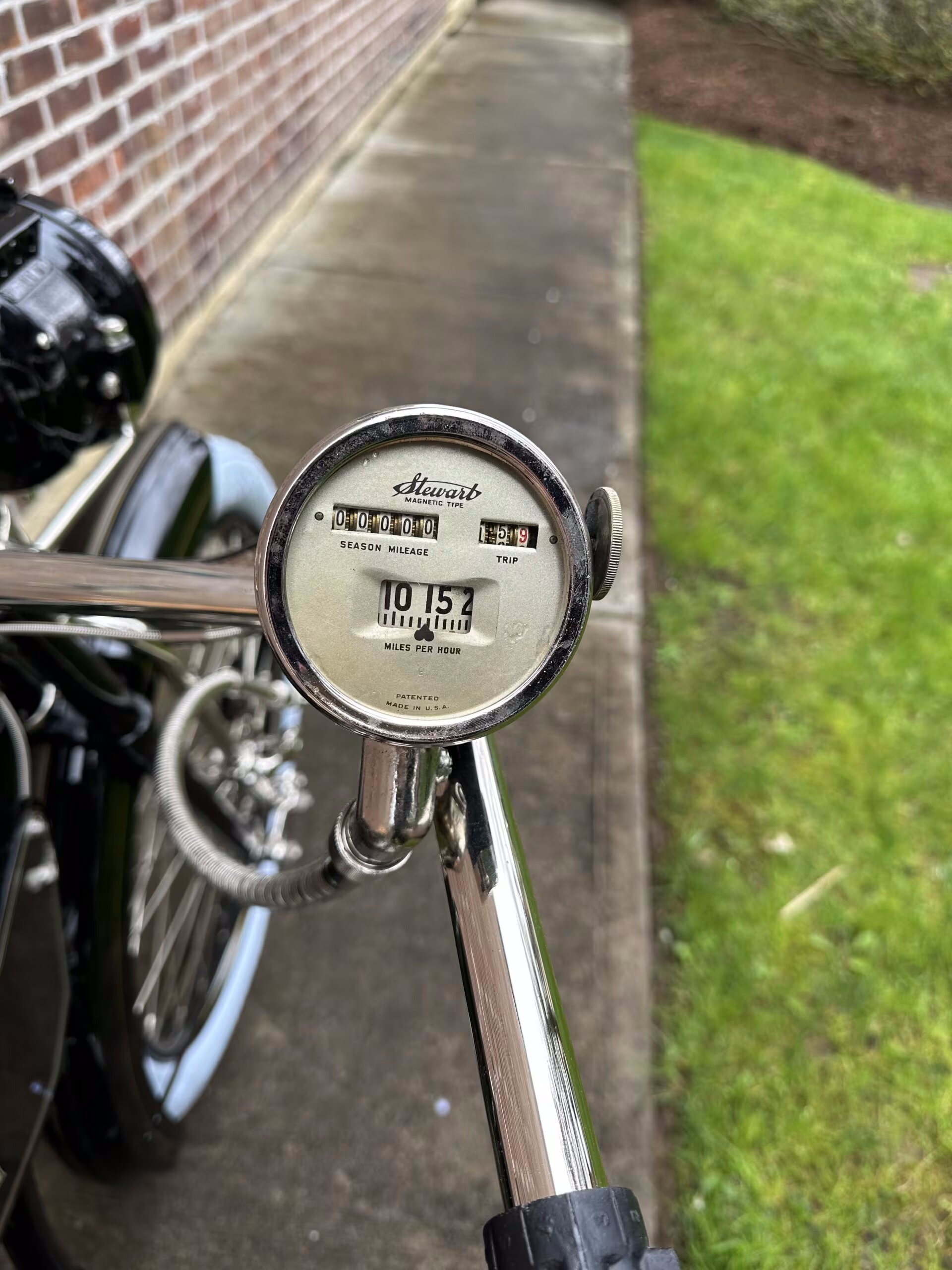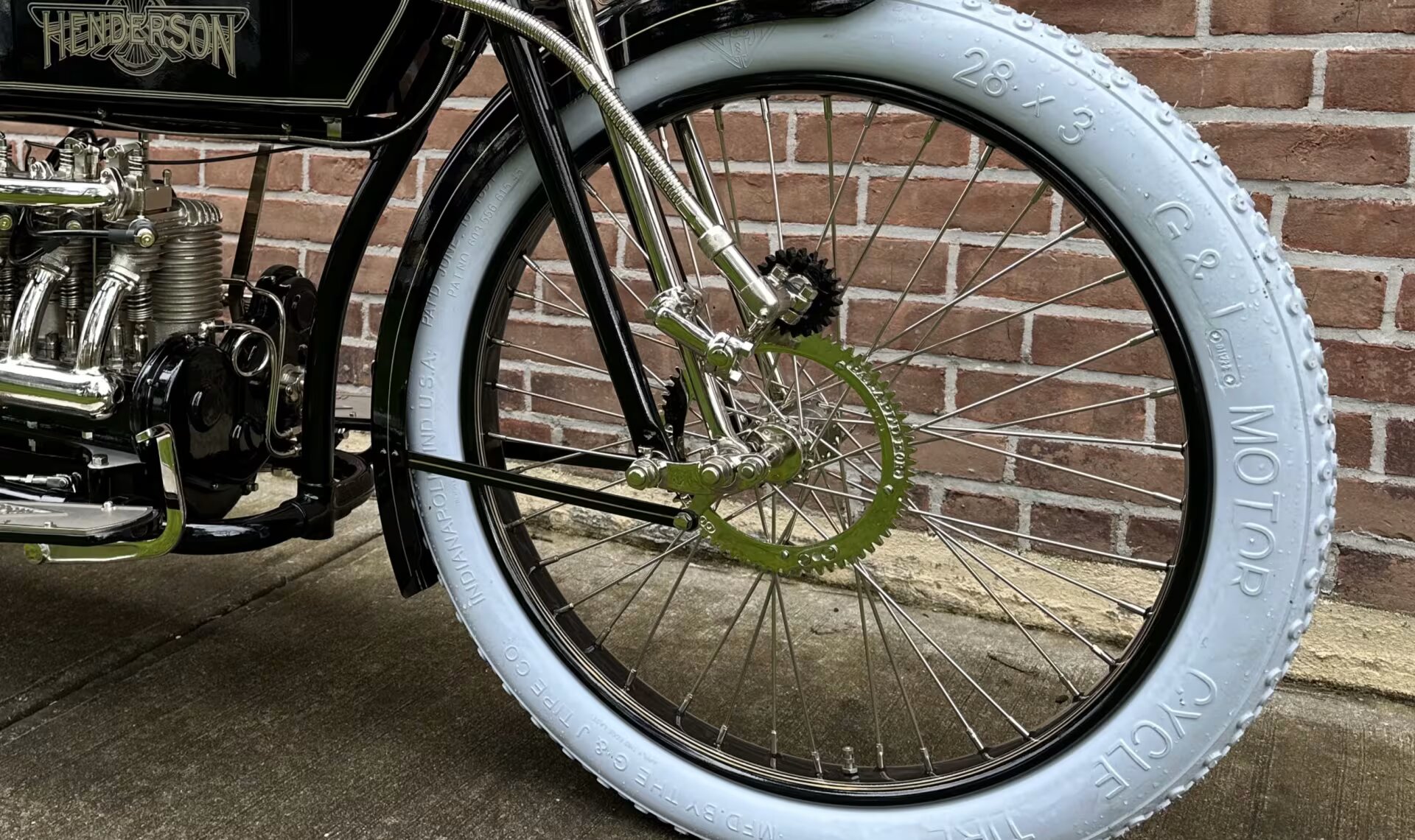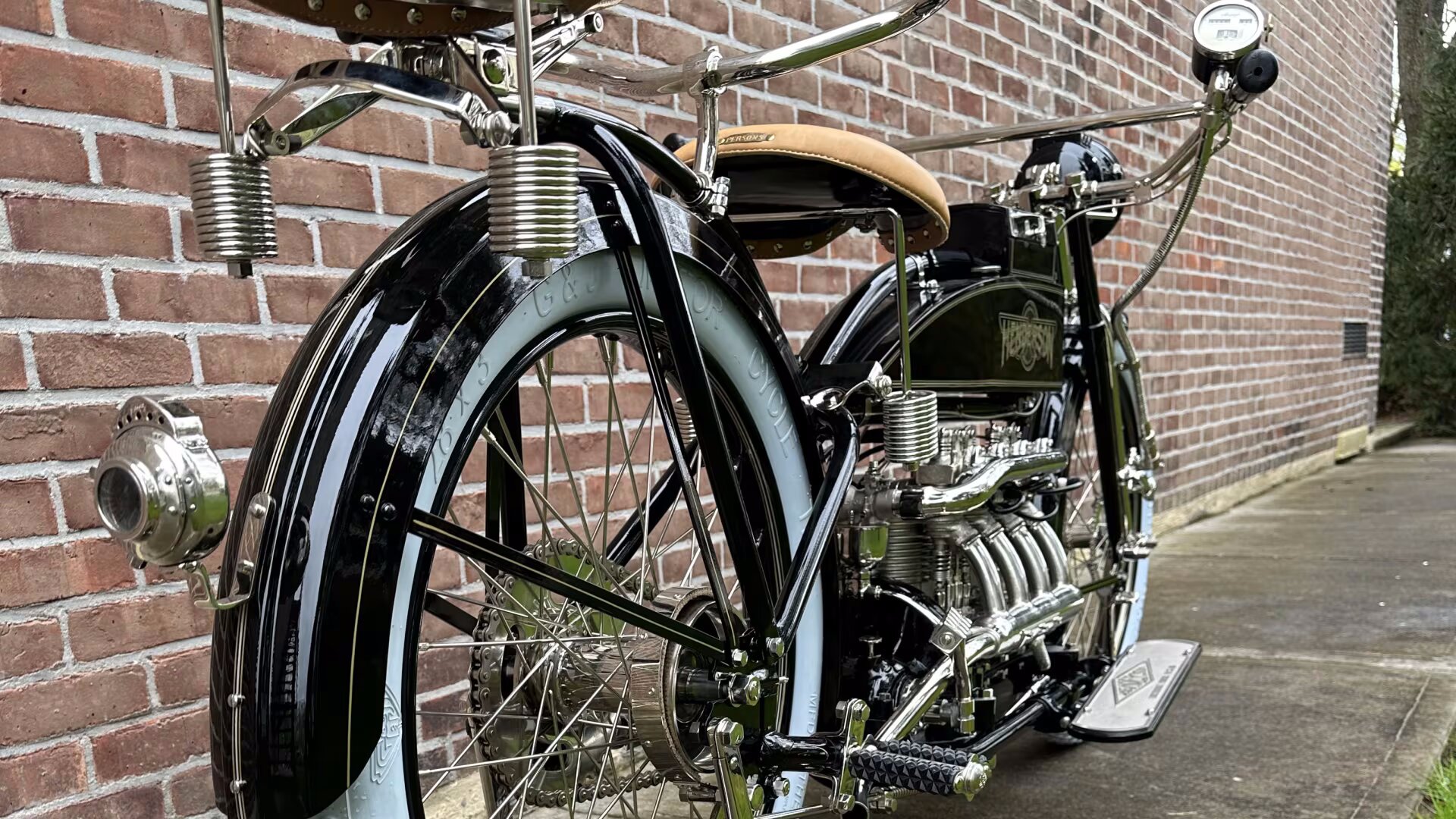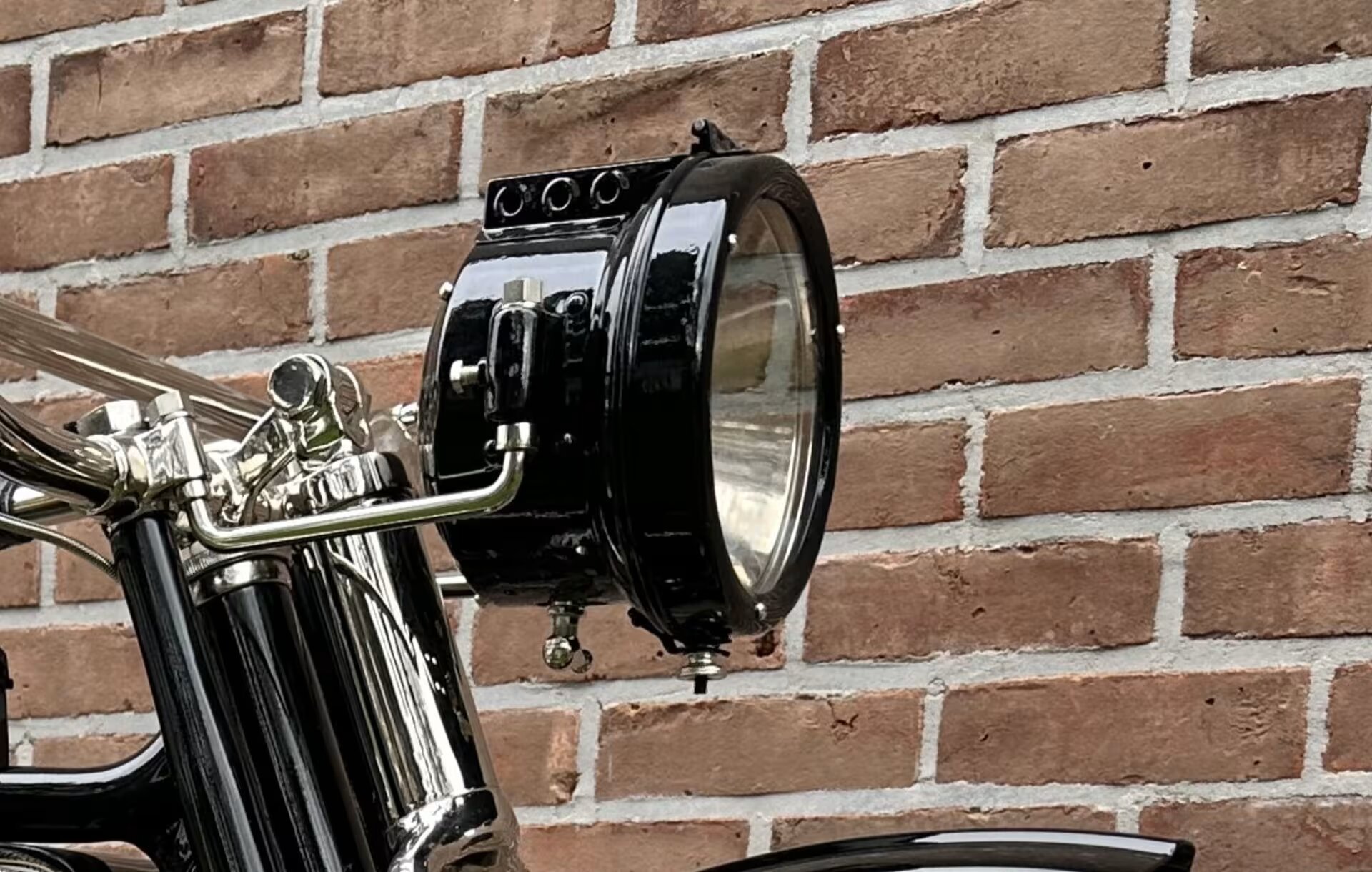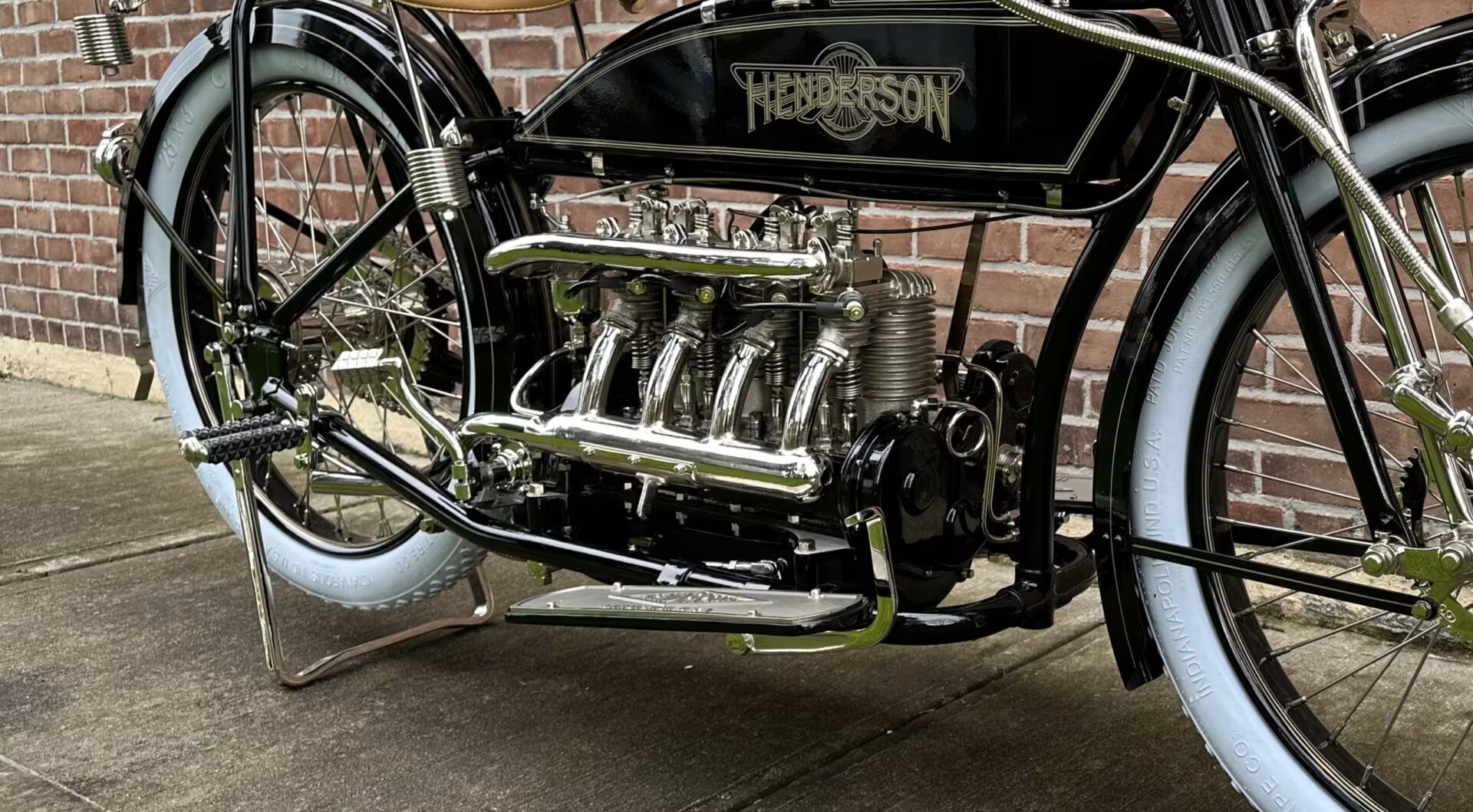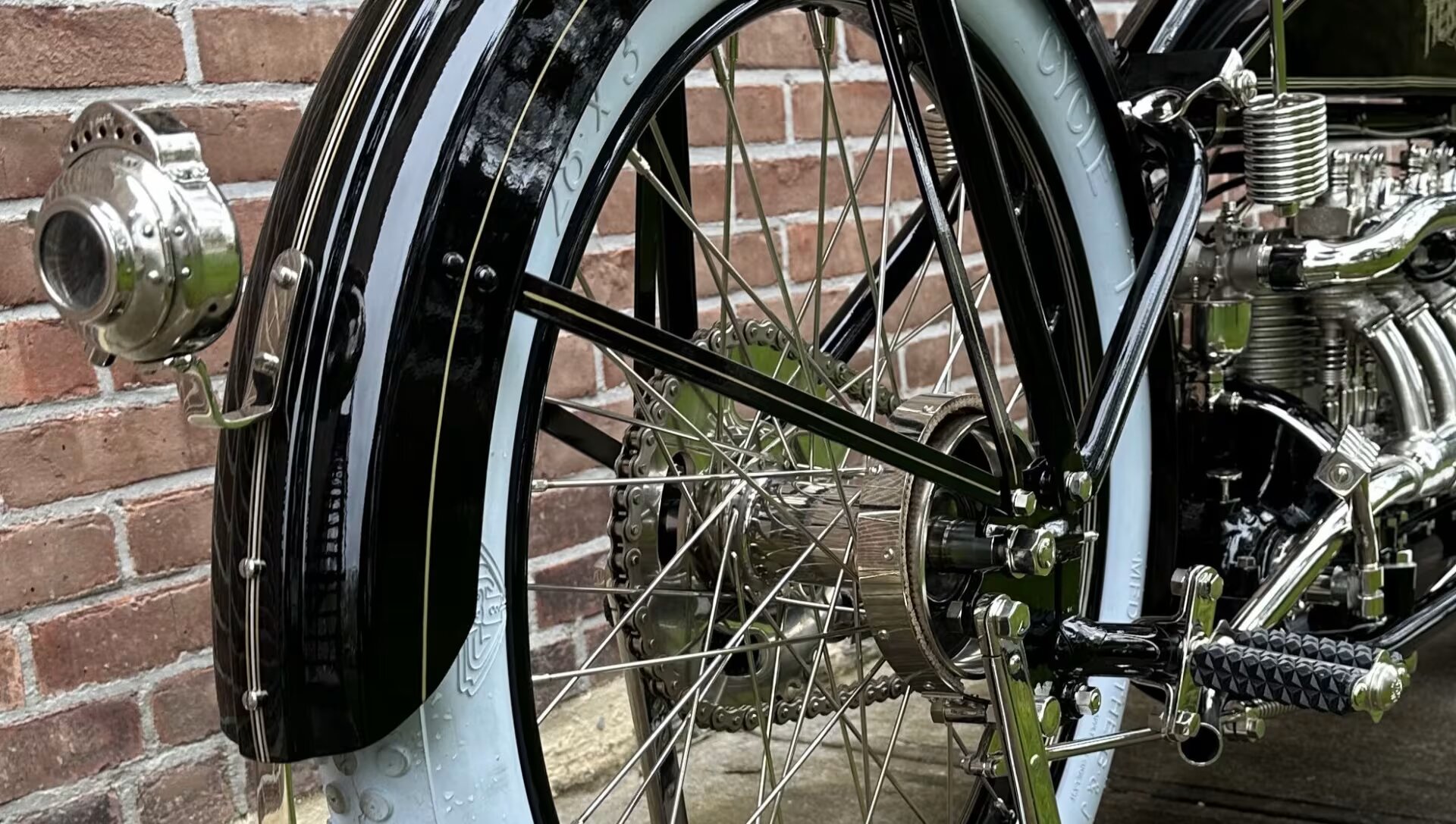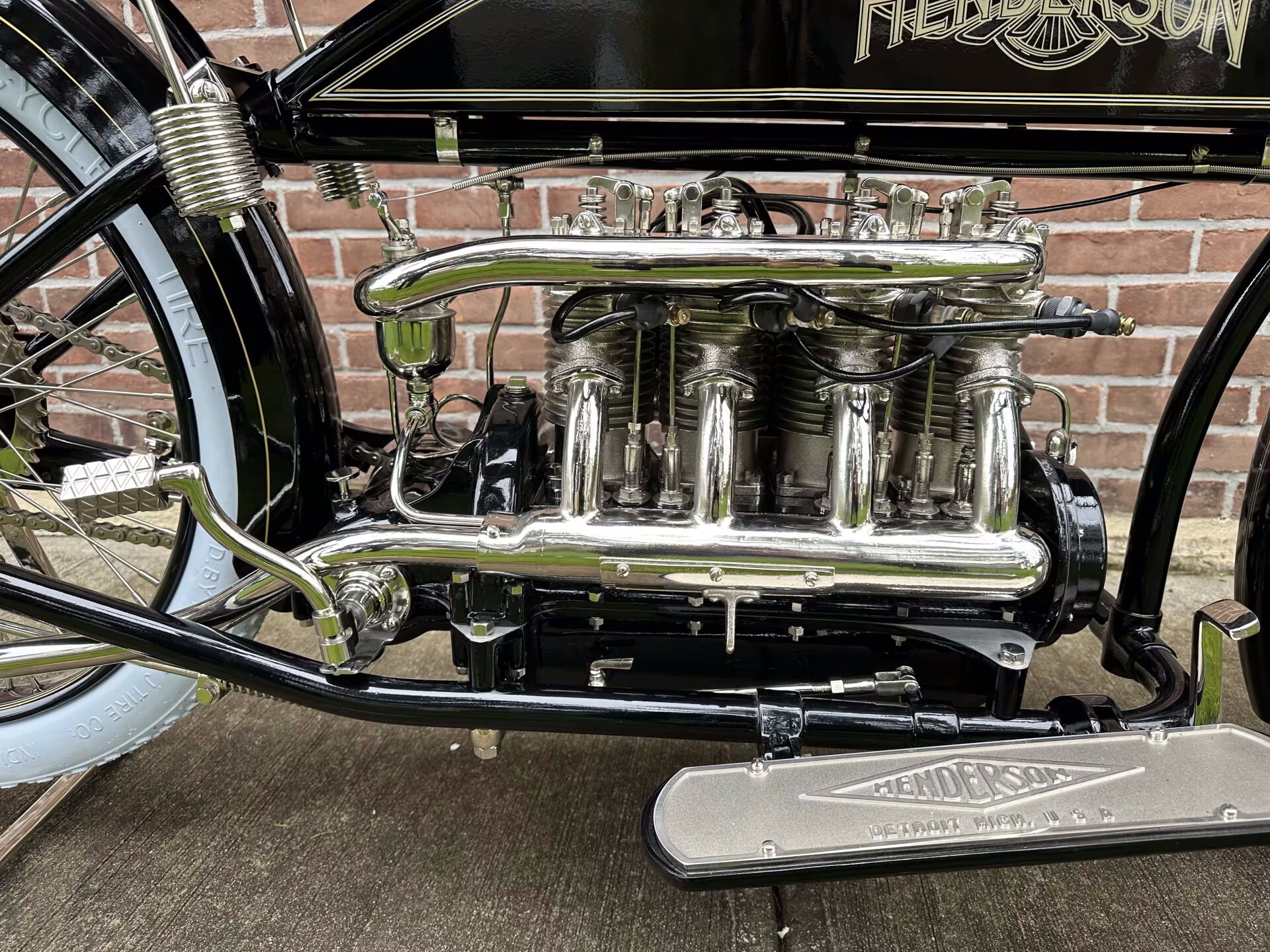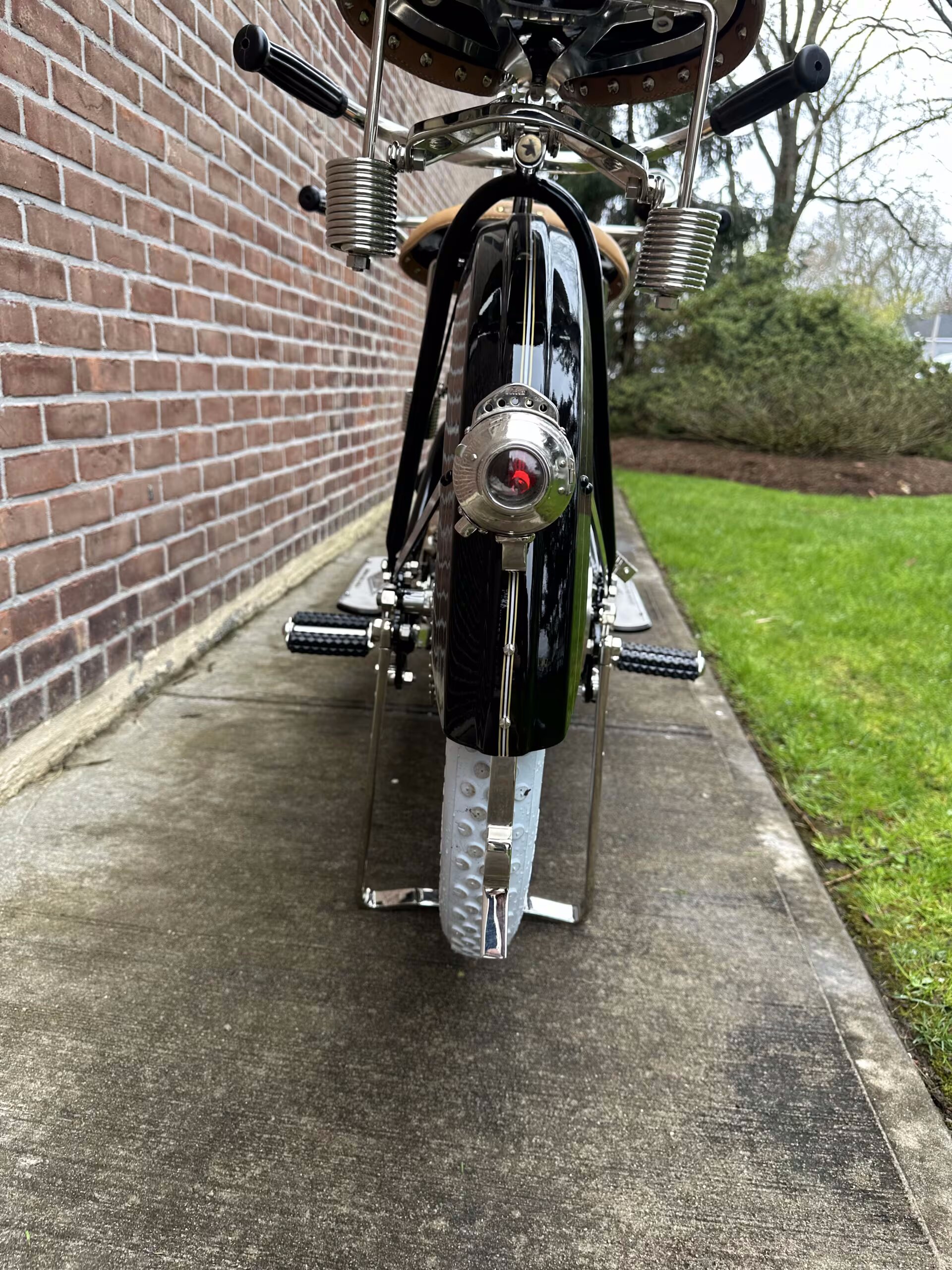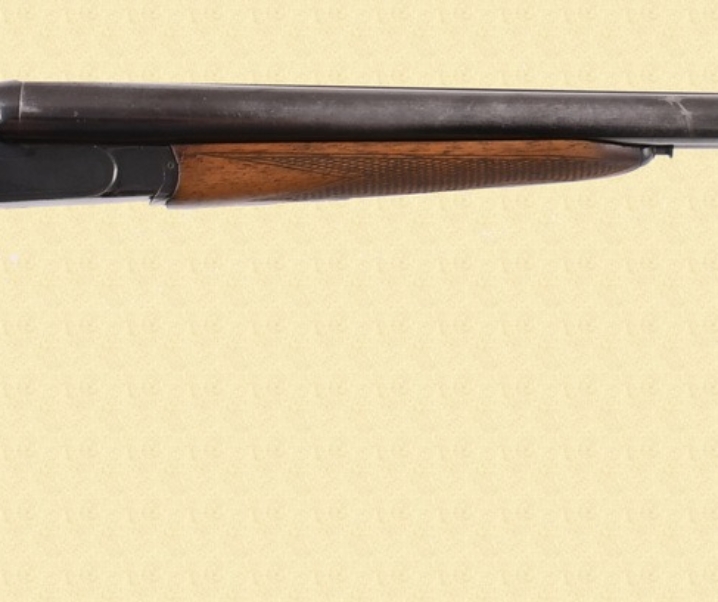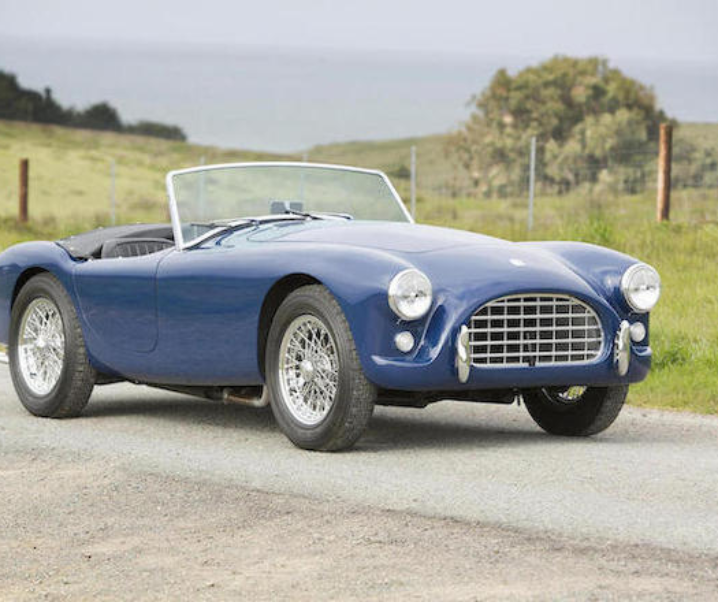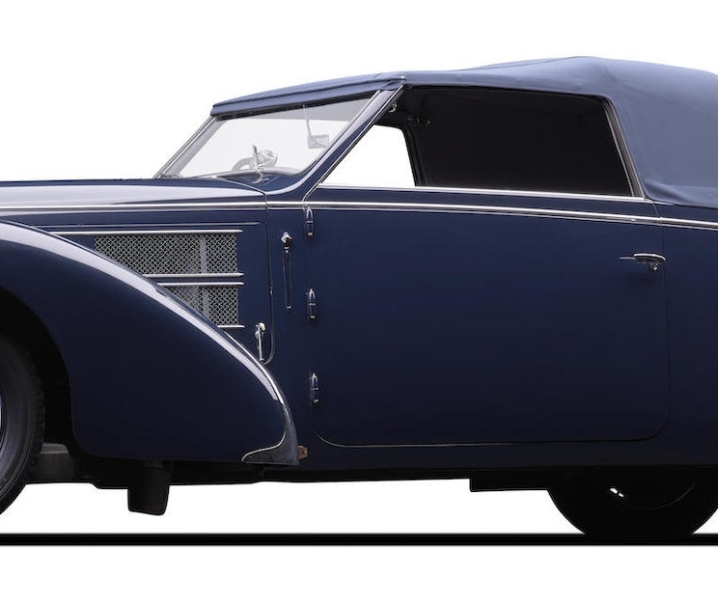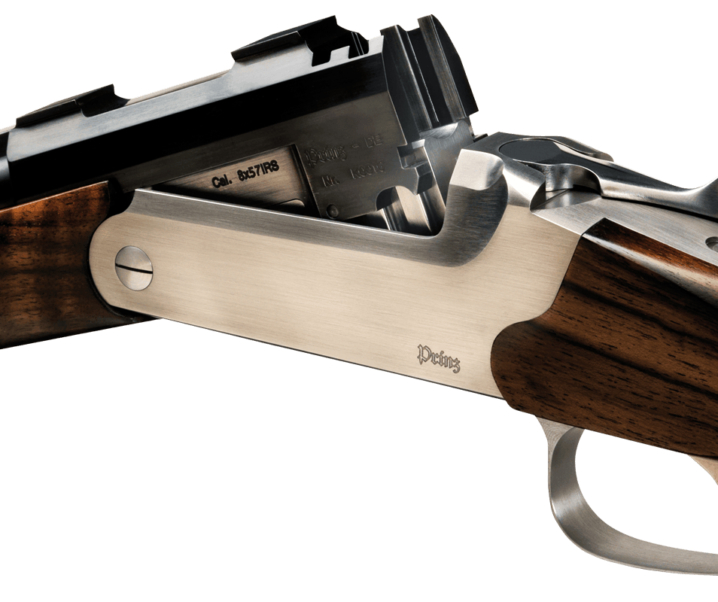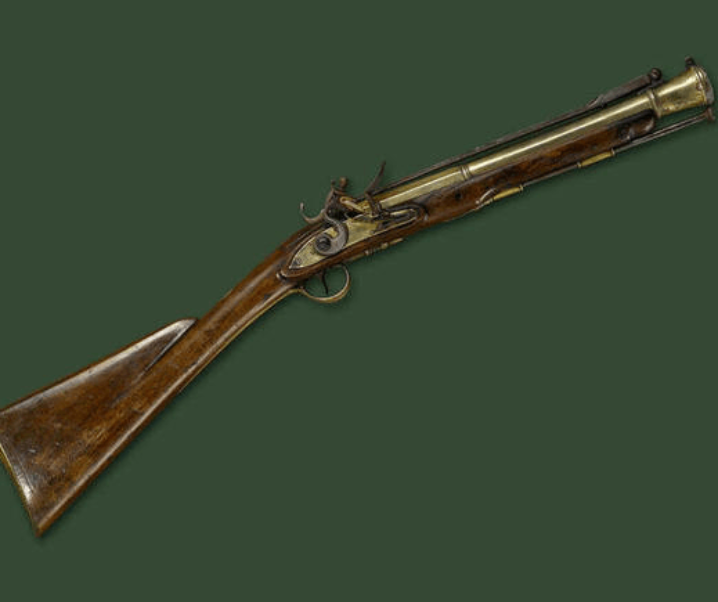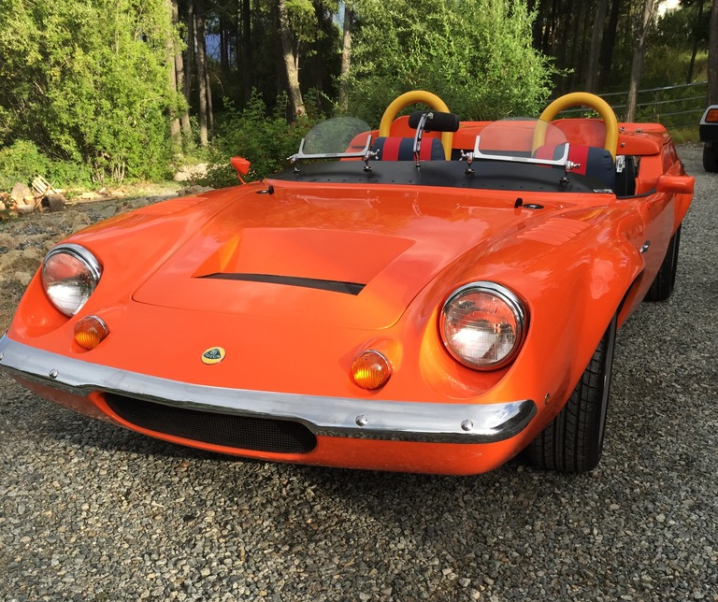The Henderson Four was one of America’s most famous motorcycles during the first three decades of the twentieth century. These bikes achieved fame in their first and second years of production 1912-1913 when a pioneer motorcyclist named Carl Stearns Clancy rode one all the way around the world.
Fast Facts
- William and Tom Henderson started their motorcycle manufacturing business in 1911 with their Henderson Four entering production in 1912.
- These motorcycles achieved fame when Carl Stearns Clancy purchased one and proceeded to ride it around the world: a journey of 18,000 miles.
- A restored 1915 vintage Henderson Four is coming up for sale by Mecum Auctions.
William Henderson started out on his life career path as a teenager drawing sketches of what he thought would be great designs for a motorcycle. Motorcycles were a new idea back then. William had been born in 1882, a time when America’s “Wild West” was wild indeed, and less than two decades after the end of the Civil War.
William’s designs progressively improved and went from rough ideas to quite refined designs and by 1909 William’s dad could see that his son had commercially viable ideas.
To really evaluate things William’s dad got his two sons, William and Tom, to construct a running prototype motorcycle. So the two brothers got busy on a project that would take them about two years to complete.
By 1911 William and Tom had created a superb motorcycle, and in the process learned a great deal about motorcycle design and construction.
Just how developed the prototype was can be gauged by the fact that the brothers were able to secure $175,000 in capital with which to establish their motorcycle production business.
As can be imagined – $175,000 was a great deal of money back in 1911, and this shows just how much trust and responsibility William and Tom Henderson were considered worthy to be given. William was twenty-nine years old at the time.
The Henderson Four entered production in 1912. The bike was powered by a 7hp 57 cu. in. (934cc) F head (inlet over exhaust) in-line four cylinder engine with a clutch and a single speed chain drive to the rear wheels.
Many motorcycles of this period were single speed, and the Henderson Four was able to manage a good turn of speed despite this. The use of a single speed also kept the mechanics of the bike as simple as possible, and simplicity normally translates into reliability and ease of maintenance.
The reliability of the Henderson Four was put to the test when Carl Stearns Clancy purchased one and used it for his around the world trip which he began in 1912 – the Henderson Four’s first year of production, and successfully completed in August 1913 after covering 18,000 miles.
The Henderson brothers continued improvement of their motorcycles and business with William being primarily involved in the design and engineering while Tom was the finance man.
For 1913 the Henderson Four was refined by the fitting of an upgraded brake, improved girder forks, and the fuel tank was changed from tubular to a rectangular profile. The seat was also lowered to make for a more comfortable riding experience.
The Henderson Four was in the process of establishing an enviable reputation and William was determined to improve his bike carefully so as to keep the bike’s reputation excellent.
In 1914 William Henderson’s Four became the Henderson Model C and it was treated to a two-speed gearbox, lighter pistons, and adjustable seat springs.
Then in 1915 William Henderson introduced his Model D and Model E. Both these models continued to offer the two-speed gearbox hub, the Model C having a wheelbase of 65 inches and the Model D a wheelbase of 58 inches. These bikes were fitted with a 65 cu. in inline four cylinder engine and featured a raised instep on the foot-boards.
In 1915 a buyer could decide the specifications of his bike so it was possible to have a Henderson Four with the 65 cu. in. engine and single speed transmission with the shorter 58 inch wheelbase chassis.
A good example of such an equipped Henderson Four from 1915 is coming up for sale by Mecum Auctions at their Indy 2025 auction.
This bike is fitted with period correct tandem seats, footrests and handlebars, and is finished in hand-rubbed black paint with nickel plated bright-work.
A Stewart speedometer is fitted at the front and the bike has an acetylene headlight and tail light fed by Presto acetylene tanks.
The bike is fitted with a Claxton horn with which to warn creatures and pedestrians of the bike’s approach.
You will find the sale page for this motorcycle if you click here.
The Henderson four cylinder motorcycles would continue in production under the management of William and Tom until 1917 when they had to sell the company to Ignaz Schwinn of Schwinn bicycles and also Excelsior motorcycles.
Production would end in 1931 when Ignaz Schwinn decided to close his business in the face of the threat posed by the Wall Street Crash and the Great Depression.
Picture Credits: All pictures courtesy Mecum Auctions.
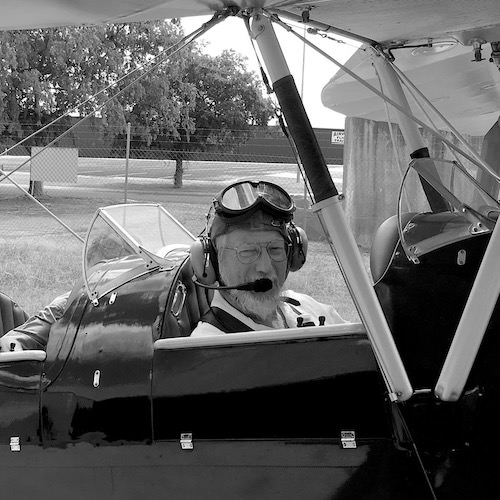
Jon Branch is the founder and senior editor of Revivaler and has written a significant number of articles for various publications including official Buying Guides for eBay, classic car articles for Hagerty, magazine articles for both the Australian Shooters Journal and the Australian Shooter, and he’s a long time contributor to Silodrome.
Jon has done radio, television, magazine and newspaper interviews on various issues, and has traveled extensively, having lived in Britain, Australia, China and Hong Kong. His travels have taken him to Indonesia, Israel, Italy, Japan and a number of other countries. He has studied the Japanese sword arts and has a long history of involvement in the shooting sports, which has included authoring submissions to government on various firearms related issues and assisting in the design and establishment of shooting ranges.
